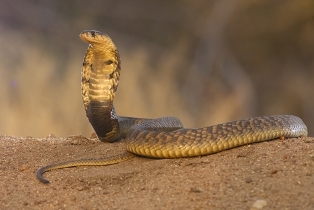At snakes, usually called snakes, are animals that cause panic in many people. Many of them have poison-producing glands located in their mouths, which may explain why they are so feared.
That poison, or venom, has substances that can cause pain and even death to a person. It usually causes hemorrhage or tissue destruction.
The serpent's tooth is responsible for the inoculation of the venom into the victim. According to the dentition, we can classify them into: aglyphs, opisthoglyphs, proteroglyphs or solenoglyphs.
At aglyphic snakes are those that have teeth of equal size and no channels for the passage of venom. It is worth noting that this type of snake may or may not have venom. As an example of this group, we can mention theanaconda and pythons.
Atopistoglyphs they are snakes with pairs of large teeth in which there are cracks through which the poison flows. However, these teeth are located in the most posterior parts of the animal's mouth, which makes inoculation very difficult. As an example, we have the false coral and the green garden snake.
Many people think that aglyphic and opisthoglyphic snakes, as they do not have efficient teeth in the inoculation of venom, do not pose risks to human beings. However, cases of poisoning by this type of snake have been reported in Brazil.
Atproteroglyph snakesthey are those that have small fangs on the front with long and deep slits through which the poison flows. As an example, we can mention the true coral and the cobra.
Finally, we have thesolenoglyphic snakeswhich have hollow fangs and channels located in the anterior region of the mouth. These teeth can be compared to injection needles. It is the most efficient type of dentition as it has the ability to remain bent over backwards when the snake has its mouth closed and to move forward when it strikes. This is the group that causes the most accidents. As an example, we can mention rattlesnakes, jararacuçu, jararacas and surucucu.

The cobra is able to inoculate the venom and release it over long distances
In addition to inoculation through dentition, some snakes have developed a special way of bringing the victim into contact with the venom. Cobra, for example, are able to inject it and also release it. A cobra's venom jet can reach three meters away.
by Vanessa dos Santos
Graduated in Biology



